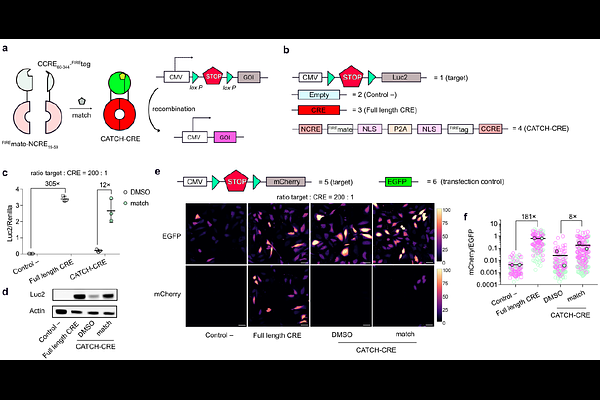Chemically responsive protein switches for the precise control of biological activities

Chemically responsive protein switches for the precise control of biological activities
Franco Pinto, J.; Drahy, N.; Divoux, S.; Perez, F.; Gautier, A.
AbstractChemically induced proximity/dimerization (CIP/D) is a powerful tool for basic biological research, biotechnology and cell therapy applications. In this approach, small molecules inducing the proximity or interaction of proteins enable the chemical regulation of cellular functions. Here, we employ CATCHFIRE (chemically assisted tethering of chimera by fluorogenic induced recognition) for creating chemically responsive proteins switches for the precise and reversible control of various biological activities. We demonstrated that CATCHFIRE could be used to chemically induce the assembly and thus function of various split enzymes such as luciferases, proteases or DNA recombinases. We extended this approach to the control of transcription activators and developed CATCH-ON for chemically inducible gene expression. Relying on the chemically induced dimerization of the DNA-binding domain GAL4 and the truncated transcription factor p65{Delta}, CATCH-ON allowed us to precisely regulate the expression of cellular enzymes such as proteases, DNA recombinases, or suicide switches, as well as to control the secretion of therapeutically relevant proteins such as insulin. We showed that the CATCH-ON system is fast-acting, reversible, titratable, non-toxic and compatible with other CIP/D systems, opening exciting possibilities for its application in basic research, biotechnology and cell therapy.